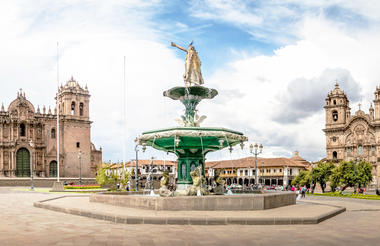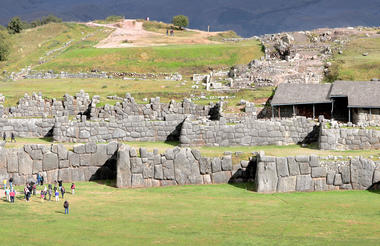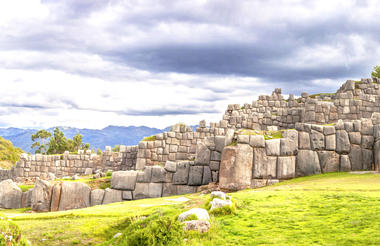Peru’s capital is a fantastic city to tour, dotted with a multitude of cultural sites and beautifully preserved architecture. Founded by the conquistador Francisco Pizarro in 1535, Lima was first named ‘City of Kings’ – a biblical reference to the ‘Three Wise Men of the East’ – before its name was changed by the Spanish colonialists. The most significant historical buildings are located around the Plaza Mayor, the most notable being the Government Palace, where one can still observe the changing of the guard performed by the Húsares de Junín. The beautiful Cathedral and the various small palaces and colonial balconies also play also their part in the beauty of the city. Another highlight is the famed Larco Herrera Museum, documenting the millennial cultures that preceded the Inca civilization and containing a priceless collection of pre-Columbian artifacts, including some of South America's finest pre-Inca erotic pottery.
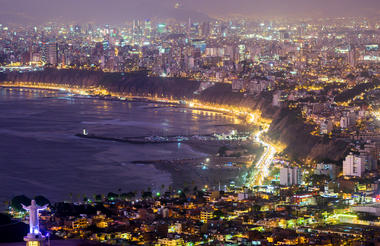

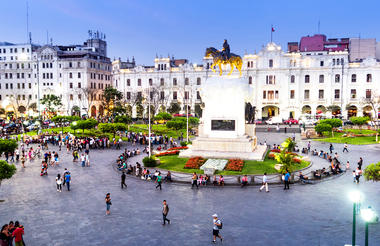
A lunar-like landscape meets the ocean at Paracas, a small beach town on the Paracas peninsula in southern Peru. Stark cliffs drop into the ocean and rugged promontories jut out to sea, offering a beachfront residence to the flocks of marine birds in the area. Many visitors travel to Paracas to enjoy the beaches and the perks of a resort town, however it’s the adjacent marine reserve and outlying islands that most intrigue travellers, offering the chance to view penguins, sea lions, dolphins and seals in their natural habitat. Don’t miss the Paracas Candelabra, a mystic geoglyph etched into the rock and dating back to 200 BCE.



Within the quaint streets of present-day Ollantaytambo is an Inca fortress that was built to guard the entrance to this part of the valley and protect it from possible invasion from the jungle tribes. Later the Citadel of Ollantaytambo, was the scene of the Inca resistance against the troops of Hernando Pizarro. This gigantic agricultural, administrative, religious and social complex is located 97 km from Cusco and includes a temple, platforms and an urban area. We can distinguish two areas: one called "Araqama Ayllu", an area linked to ritual and sacred activities, and the second "Qosqo Ayllu", dedicated to housing. Ollantaytambo was an important administrative center, which probably also fulfilled military functions, as indicated by its walls and towers. There are also traces of ancient roads and aqueducts. The town of Ollantaytambo is called a "Living Inca Town", because its people maintain ancient customs and traditions.



Nazca is situated in the Southern Coast region of Peru. The town is famous for the UNESCO World Heritage Site, Nazca Lines: enormous zoomorphic drawings created in the desert by scratching away the top layer of rock and sediment to reveal lighter sand beneath. These mysterious, larger-than-life etchings are an unforgettable sight and should feature on any Peruvian travel itinerary. Other key attractions include the Nazca Channels (or Puquios) at Cantalloc – ancient underground aqueducts found near the Inca ruins of Paredones – and the interesting Museo Arqueologico Antonini, which provides great context and information about these archaeological sites. It also houses an excellent collection of Nazca ceramics and textiles (which are known for their vibrant colours and patterns).



The gorgeous city of Arequipa is a perfect blend of ancient architectural treasures and modern buildings, blessed with an average of 300 days of sunny weather a year. It is also known as ‘The White City’ – a nickname that stems from its numerous white buildings, which form a striking contrast with the green surroundings. It is Peru’s most elegant city and the best place to visit if you’re a foodie on the hunt for fine dining opportunities, with an array of fabulous restaurants offering spicy local specialities such as rocoto relleno, chupe de Camarones and ocopa. This city has an illustrious history and its distinctive traditions make it a truly unique Peruvian destination.



The spectacular Colca Valley is famous for its dramatic scenery – rolling mountain folds that plunge into the depths of the Colca Canyon, through which the Colca River runs for some 50 kilometres, passing ancient Spanish villages where women still dress in traditional Andean garb. The residents of this valley are the descendants of the Cabana-Quechua valley people and the Collagua, a pre-Inca highland tribe known for their impressive textile art and stone carvings. Highlights of the region include visits to the valley’s various colonial churches, horseback tours and condor spotting expeditions.



Set on the shores of glistening Lake Titicaca, on the Altiplano of Peru, this large city is dubbed the ‘folklore capital' of the country, well known for its traditional music and dance. It is also famous for its incredible collection of floating islands - man-made islands created from reeds, which exhibit the unique survivalist culture that has been alive here since pre-Incan times. Other highlights include visits to the atmospheric, historical Church of San Pedro, the gorgeous Sistine Chapel of the Americas, and a stroll along the boardwalk on the shoreline of Lake Titicaca. Active types should take on the challenge to climb up the 700 steps to the Kuntur Wasi viewpoint, which is presided over by a massive metal condor sculpture, for the reward of breathtaking vistas across the city and Lake Titicaca beyond.



Once called the ‘Navel of the World’ by the Incas, Cuzco remains a city that blends colonial Spanish charm with older, more austere remains of pre-Columbian glory – one can still see the foundations of Inca structures on many of its city streets today. Cuzco’s most important landmarks include sites from both Inca and colonial times, such as the Korikancha (the ancient Temple of the Sun), the Inca street of Loreto with its 12-cornered stones, the cathedral, the Museum of Colonial Art, the archaeological park of Saqsaywaman (the fortress-temple), the nearby funerary shrines of Kenqo, and the water-worship site of Tambomachay.
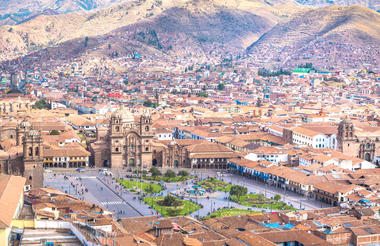
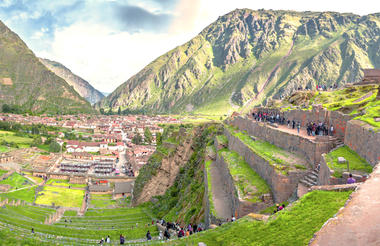
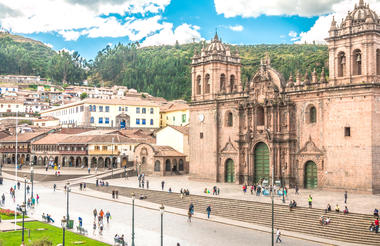
Located more than 6000 feet above sea level in Peru’s mountain peaks, Machu Picchu is one of the world’s most impressive archaeological sites. This legendary lofty city was abandoned by the Inca Empire, reclaimed by the jungle and lost to humanity until its rediscovery in 1911. Built by the Incas on the summit of "Machu Picchu" (Old Peak), in the middle of a tropical montane forest overlooking the canyon of the Urubamba, the 'Lost City of Machu Picchu' is a site of extraordinary beauty and enormous archeological significance. The complex reflects the Inca Empire at its height, with giant walls, terraces and ramps that appear to have been cut naturally in the continuous rock escarpments. The phenomenal technological skills of the Incan engineers can be seen in multiple facets of the site: the exacting precision of the massive stone buildings, the water channels that reveal a deep understanding of hydraulics, and Intihuatana ("the highest point of the Sun"), which served as a solar calendar that regulated planting and harvesting.

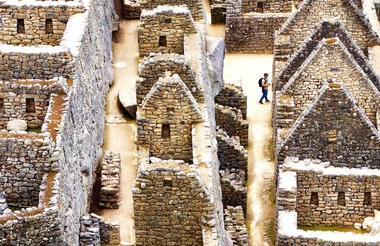
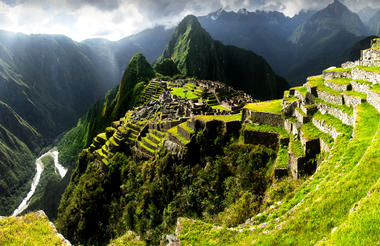
The highest peak in the Peruvian Andes’ Vilcabamba mountain range, Salkantay is famous for its proximity to Machu Picchu and its incredible alternative trekking route to the ancient site. To take the route known as the Salkantay Trek, hikers begin at Cusco and make their way through a snowy mountain pass before descending into lush jungle, and then arriving at the most sought after destination in South America. This alternative has many advantages, such as its significantly lower number of hikers, a quick and easy booking process (it is even possible to book on the day), and even arguably better scenery. The trail includes an option to pass the exquisite bright blue Humantay Lagoon, and the wonderful rock-sculpted thermal pools known by many as the best on the continent, with spectacular views of the mountains.



As previously described



Perched high up in the Andes, Machu Picchu Pueblo is a riverside town known for its proximity to the famous Machu Picchu ruins. This cloud-forest town is encircled by towering forested cliffs and boasts an endless array of hotels, restaurants, markets and labyrinthine streets. Machu Picchu Pueblo, also known as Aguas Calientes, serves as an excellent base to explore the renowned ancient archaeological site of Machu Picchu. Visitors can enjoy various other activities, including having a relaxing massage after a long day of exploring, taking a stroll through lush rainforest to the Mandor Waterfalls, embarking on an adventurous hike up the Putucusi Mountain or soaking in the relaxing thermal baths with the Andes as your backdrop. Don’t miss the Machu Picchu Museum and Botanical Gardens, displaying the area’s history and diversity of indigenous flora.
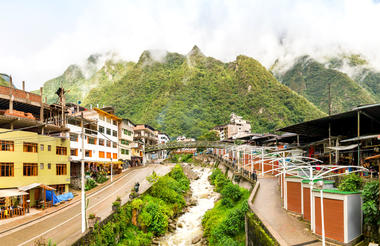

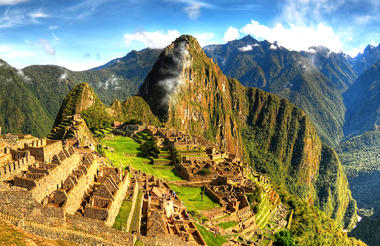
As previously described
